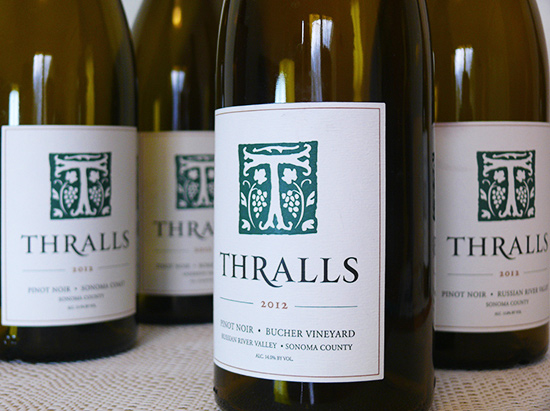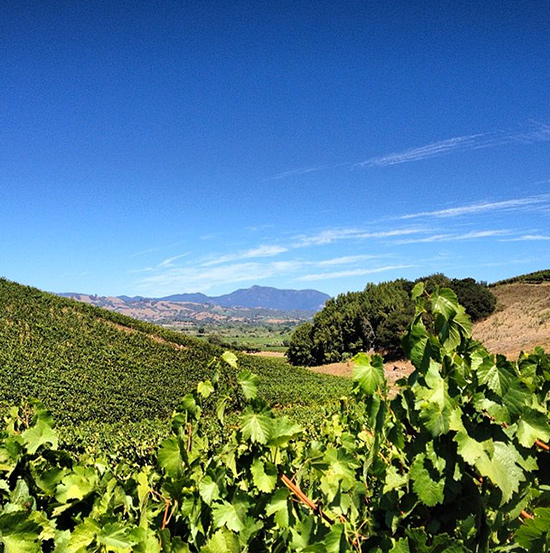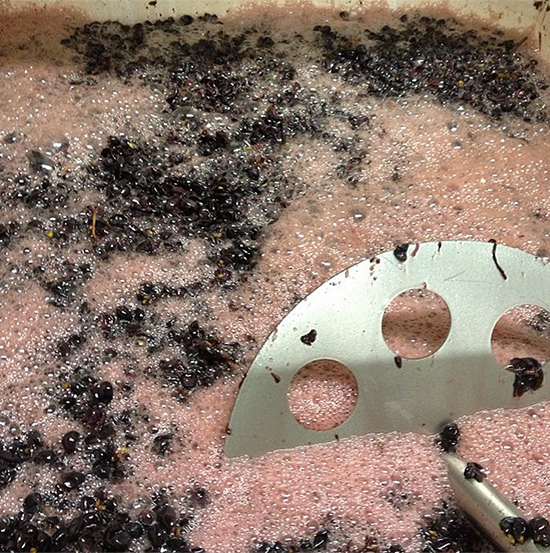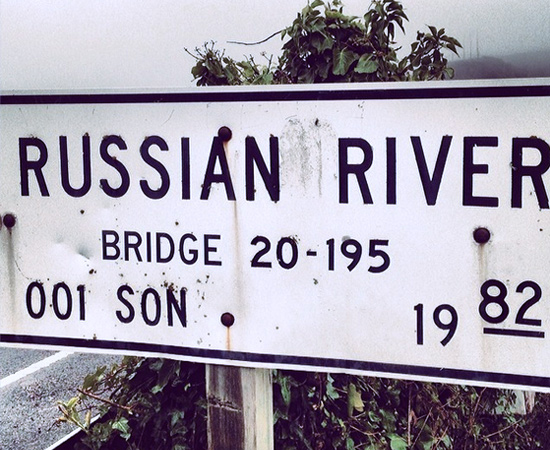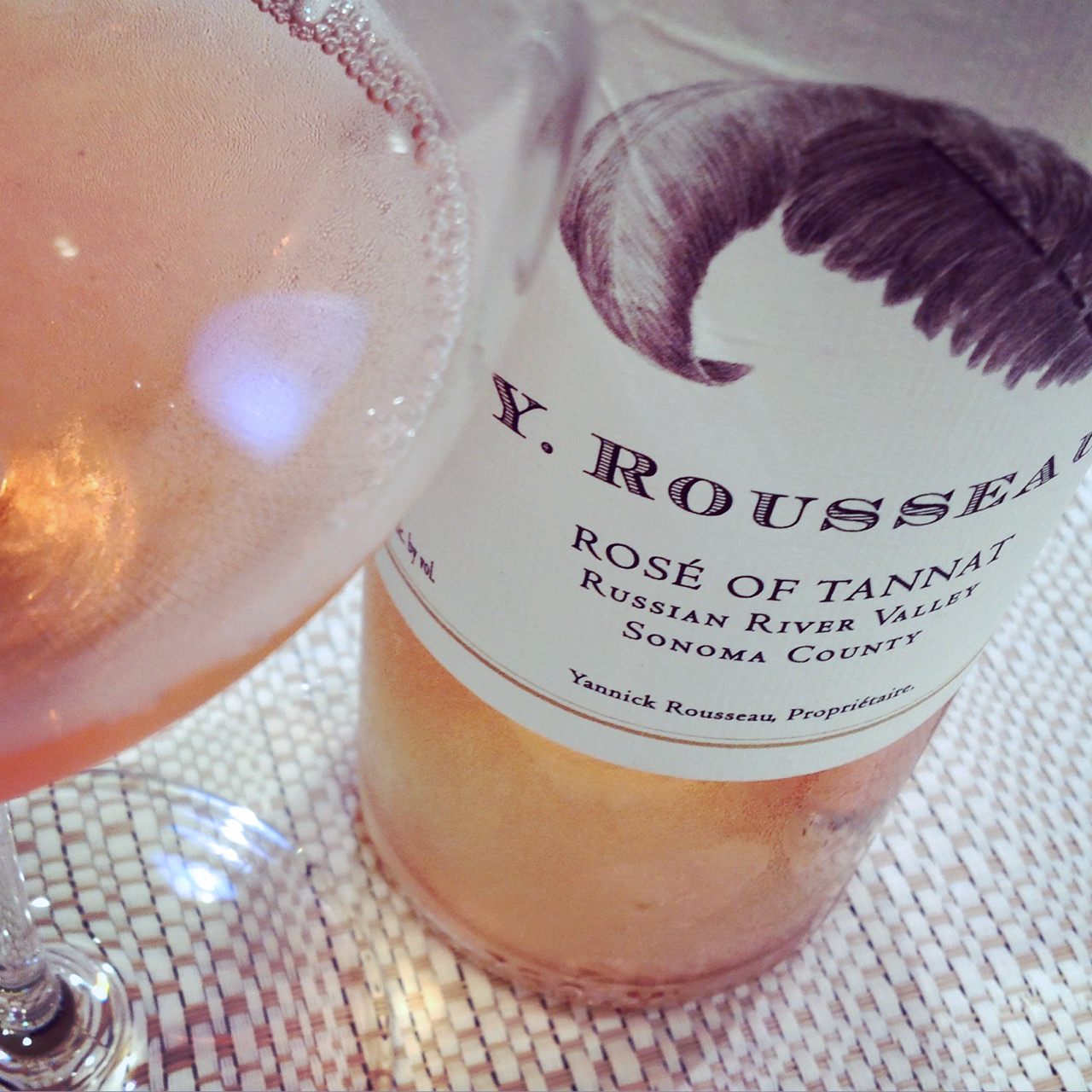Ed Thralls arrived in Sonoma in 2010, quitting an East Coast career in banking software to chase a beautiful, difficult idea: to make wine.
Thralls has stained his hands with only a few vintages, but he’s just released a quartet of Pinot Noirs under the Thralls Family Cellars label that belie his short winemaking tenure. These are wines with precision and elan, and given a total production of just 370 cases, I doubt they’ll stick around long.
I recently spoke with Thralls about his trajectory, his ideals, and what’s in his way now.
You began making wine as a garagiste before you moved to California. Tell me about your first experiments.
It was at a custom crush facility in Atlanta. I bought frozen must, plus grapes from Blackstock in North Georgia. I did a Viognier and a Cabernet. I didn’t have much control of the chemistry—no filtering, no SO2. The wine was drinkable, but it definitely was a garagiste approach. You could tell it was made at your house.
Talk about your decision to move to Sonoma. Did it feel like a big risk?
It was a five-year plan. I was enamored of wine and learning more about it, while also getting disillusioned with my career in banking software. I’d gotten to the point where I’m like, I want to move out to California, I want to make wine, this is my long-term goal. But at Year Three, in 2010, I lost my job. That accelerated things.
I’d developed relationships using social media and my blog, and from visiting out here a lot. One person was John Holdredge up in Healdsburg. He’d said to call if I ever wanted to get my hands on, because he always needed interns. So in the summer of 2010, I called him to see about working harvest.
Being out here allowed me to do two things: One, to be in a real winemaking environment; and Two, to hit the streets and find a good job that would allow me to stay.
Has your corporate work (and your MBA) helped your wine business?
I don’t think a winery would say, Oh, this guy’s got an MBA, and that’s going to give him an edge up. But personally, it gave me broad experience, so that when I was talking to wineries out here about work—as well as when I was setting up my business for Thralls Family Cellars—I had experience from the finance and accounting angles, sales, and just understanding the development of an organization.
I’m completely working off my own funds at the moment. Thralls Cellars is something I saved up money for. It’s going to take five to seven years for me to transition it to something I can do full time.
You shut down your long-running wine blog, Winetonite.com. What’s it like being on the other side of the wine writer dialectic?
I just kind of let the blog go away. It got to the point where my focus was so much on my day job and building Thralls that there was no opportunity to continue.
The experience of getting to the other side is pretty amazing. Wine is always changing—it’s living. When you really start making it, you sit back and think, What is this going to be? Is it going to be any good? Did I make the right picking decision? Should I have waited a couple more days, or a week?
And then the wine comes out, and you put it in front of other people, and now you’re on the edge of your seat. Because this is what you’re doing it for, right? I’ve been lucky enough so far to have a pretty positive reaction. It’s been a relief, but there’s always a kind of tension, a positive tension, that keeps you moving forward.
You find that motivating, the tension?
I do, actually. Throughout my life and career, I’ve always craved challenging myself. I’m not one to worry about change—I adapt to change and embrace it. This exercise of doing something on my own, from vineyard to bottle, and getting that reaction, positive or negative, is pretty cool.
It’s creative. It’s an artistic act—there’s obviously some science—but the wine is an expression of your process.
It’s great you mention that, because for me, wine has invited introspection—as it does to itself. When you sit down with a glass of wine, it invites you to dig into it: What am I getting here?
The creative and artistic side of wine attracted me. When I was younger, I was pretty creative, writing poetry. Then I got into the computer side of things and stayed mathematical and scientific for a few years. This work is allowing me to get back to my roots and to what’s been missing.
Why Pinot Noir? It’s not exactly the easiest grape to start a winery with.
Not only is it the “heartbreak grape” and tough to work with, it’s not cheap, either!
I’ve been more attracted to Pinot Noir for the past eight years than I have to anything else. I visited Oregon and embraced the Pinot Noir there. I’ve enjoyed Burgundy—I’ve never visited, but as far as the wines go, that is the wine I can really can relate to. I think it has a lot to do with the fact that Pinot Noir can take on the expression of where it is from more broadly than any other grapes. The more I learned about wine, the more that became important to me.
The crux of it is that if I’m going to do this, I don’t want to shortcut it. I don’t want do it with something I’m not totally in love with and passionate about, and Pinot Noir is what I’m passionate about.
Plus, if I can make Pinot Noir, I should be able to make anything after that!
Talk about your winemaking style.
I’m becoming more engaged with the viticulture. I did study at UC Davis, so I understand the basics, the “textbook,” but the more I work with viticulturists, the more I learn. I try to work with growers who are willing to talk about how they’re managing their vineyards, who are open to that back and forth.
The picking’s really the big decision. That’s the toughest part and is really where you decide the type of wine you’re going to make. I pick a tad early, but I’m not picking early just to say I’m picking early. I’m out in the vineyards, and I do run some numbers, but for the most part I’m trying to learn how to pick by taste. The decision happens based on the profile I want, and where the acids are with the particular vineyards. I pick at Brix from 22.5 to 23.5 degrees.
I will say, with the 2013 Bucher Vineyard, it just wasn’t getting ready, and I had to wait longer than I wanted to. I waited longer than some other folks in that same area. I think I’m getting the flavor profile that I want out of it.
All four of these wines feel like individual people, each with a distinct character. That speaks to your goal of Pinot taking on the expression of where it’s grown. The wines essentially show me that you’re not manipulating the wine to achieve a particular stylistic aim.
It’s good to hear that, because yes, that was my goal. The fact that you can tell the difference between the four says that it’s working. It’s not a formula.
You’ve got four different wines: a blend from a couple of vineyards in Russian River, a single-vineyard from Russian River, a single-vineyard from Anderson Valley, and then my Sonoma Coast, which is actually also single-vineyard, but a very young vineyard—2012 was its fifth leaf. I was the first winemaker to make wine from those grapes, and I wasn’t quite sure what I’d be getting out if it, so I didn’t want to jump in with a vineyard designate.
What’s the current state of your 2013 vintage? [1]
All the Pinots are in barrel and done with malolactic. Everything I do is native. I make my wine at John Holdredge’s place, and he’s got a great strain of native yeast and bacteria in that location. It just makes things easy.
So the 2013 is all put to bed, with the exception of a small lot of Chardonnay. It’s from Antonio Mountain, which is west of Petaluma, about halfway between Petaluma and Tomales Bay, but still in Sonoma County. Imagine how cool the breezes coming from the ocean are, coming towards Petaluma. That was the last fruit that I picked last year.
It’s my first attempt at Chardonnay. I’ve got it in a temperature-controlled room, so I’m doing a slow fermentation at 55 to 60 degrees, half neutral oak, half stainless steel. I’m going to keep it fairly neutral in regard to the oak regimen. It’s still ticking away right now. I had wine made from this fruit and had been pretty impressed with it. I liked the super-cool location. I think of this as a baseline wine. I’m just looking to see what this fruit from this location can bring.
The expressive quality that your wines have—I find a kind of humility in it, in that it seems you’re serving the wine and the fruit, as opposed to serving your vision. Many people, whether in business or art, want to imprint their own style on their work product. They want to take credit for it. But when I taste your wine, I don’t get the sense of the winemaker trying to take credit for something. I get the sense of a winemaker trying to usher something into being.
Yes, 100 percent. I just have to respect what I’m given. When I’m at a vineyard I believe in, looking at the fruit, I respect it, all the way through to the glass. I’m not going to say, This is a material that I’m going to mend and modify and do something with. I can control it, I can manipulate it, I can create it. I don’t believe in that when it comes to wine.
It’s a European sensibility, right? Where winemakers talk about themselves as winegrowers. It really is about site. The winemaker is not the center of attention; the winemaker is on the side.
In the mid 90s, when I first got into wine, I traveled in Italy and Spain. That let me see that wine is a part of everyday life, and that winemakers add to the experience. One unfortunate thing in America that’s lent itself to the separation between wine growers and winemakers is that places like Napa just got too expensive. Only the rich can buy the property; those who want to make the wine have to buy the fruit.
What’s in your way right now?
I’ve got to get more folks to take the wines, get them into restaurants and wine shops. I’d like to remain majority direct-to-consumer, but there’s benefit to having some wholesale placements to get it in front of a wider audience. I’m just getting started with that. I’ve got my day job, and then I’ve got this thing to do. So there’s no obstacle—it’s just hours in the day, right?
So I’m starting local. I can market directly to on-premise locations here in California without a distributor. I’ve had a couple of sizeable placements already, including one in the city for a wine club. The rest is sold DTC. I’ve got an event planned in Atlanta, and I’m working with friends with experience in Chicago market. Then New York and Texas after that.
I think there is a shift out there to get away from the American mainstream, the more ripe, luscious Pinot Noir, perhaps a little high in alcohol or extracted. My palate was never attracted to that to begin with. I’m hoping with that trend we’ll see more folks excited about what I’m doing. Now some reviews are coming out, and with the attention I’m getting, I’m hoping momentum will build.
So your real obstacle is simply time.
Exactly. I have the desire, I’ve got the connections. Now I’ve got to get out there and hit the road. What adds to it is that with my day job at Flowers, I am out on the coast at the winery a couple of days a week, far away from civilization.
Any final thoughts you’d like to share?
When I first started thinking about starting my own label, I didn’t want to call it Thralls. Not that I ever expected my winery to be bought out, but I’d heard the story about Pax, and how he kind of lost his name for a while, and Gary Farrell had been purchased, and you just kind of lose your name, right?
But in doing some research, I learned that Thralls means “to be obedient.” In one extreme that means being a servant or a slave. But another definition means being totally obedient to a need or passion. That’s what I’m trying to get across in my wine. I want to show the passion that is wine itself, something where I’ve connected with creativity, and something that really makes me happy. That’s what this journey’s been about for the past five or six years. It’s just now coming together. It’s really an amazing feeling.
2012
Thralls Family Cellars Pinot Noir Sonoma Coast
13.5% abv | $36 (sample)
Deep raspberry color, saturated but not plummy. Aromas of fresh cranberry, macerated strawberry, and sweet cherry are ornamented with a hint of wintergreen. On the palate I find lean strawberry, ripe red raspberry, and brilliant, almost bracing acidity. Fresh, precise, and nimble. Highly recommended, and an exceptional value.
2012
Thralls Family Cellars Pinot Noir Russian River Valley
13.8% abv | $32 (sample)
Light raspberry color; it’s clear and limpid, lighter than the “Sonoma Coast.” The fruit notes (field strawberries, sweet tomato, cranberry) commingle with notes of spice and the breezy scent of a hay field on a warm summer day. On the palate I get cranberry spice, clove, sweet tea, and very ripe raspberries, and the finish yields spicy red berries and faint caramel. This wine is sweet and dark, with a roundness that renders it yielding and thoroughly accessible.
2012
Thralls Family Cellars Pinot Noir Roma’s Vineyard
13.5% | $42 (sample)
Warm rosy red. Aromas of cured meat, tomato, smoke, earth; the nose is round and warming, with a little kiss of wood. The wine has a gorgeous mouthfeel, silky but saturated, and there are flavors of raspberry and tart cherry. Overall it’s bright and clean, a great high-acid style with verve and polish.
2012
Thralls Family Cellars Pinot Noir Bucher Vineyard
14% abv | $40 (sample)
Garnet red with a clear, almost bluish rim, the wine offers an incredibly complex nose: there’s fruit (tart raspberry, orange citrus), earth (sous-bois, cured meat), and herbs (green olives, green tea, lavender, rosemary). It’s lean but muscular on the palate, with ripe strawberries and tangerine shining against a dark, earthy background. It feels feral and wild and enchanted. Just lovely.
[1] This interview was conducted at the end of January, 2014.
Many thanks to Wine Business and Wine Industry Insight for recommending this article to their readers.

